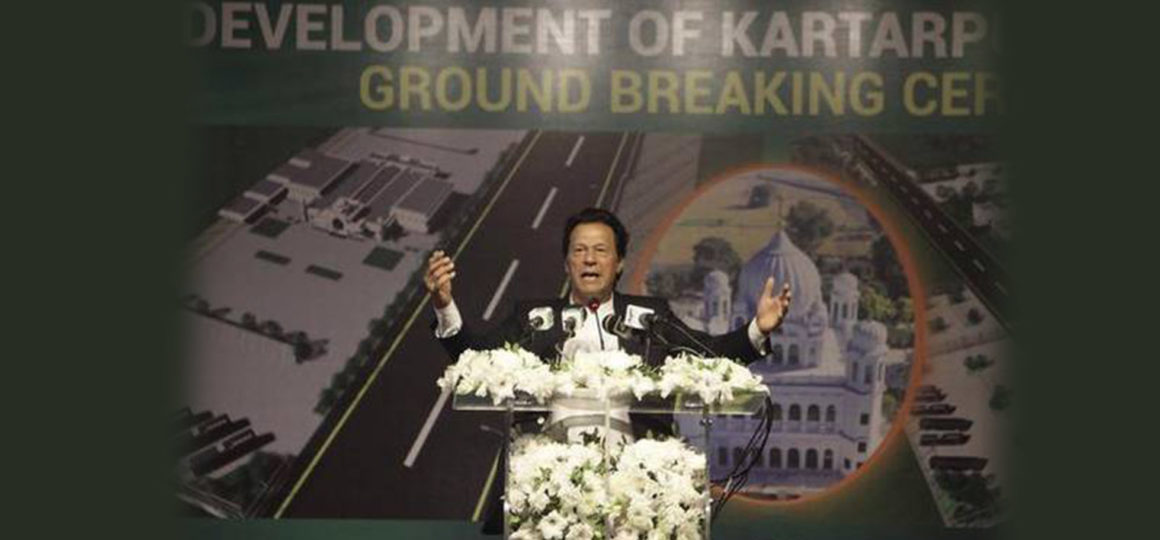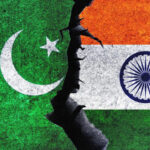In a particularly trying moment of an interview on BBC’s Hard Talk last week, Pakistan’s Finance Minister Asad Umar seemed to lose his temper when asked about the U.S.’s statements on curbing the International Monetary Fund (IMF)’s loans, given Pakistan’s debt to China.
“We will worry about our debt problem, let Mr. [Mike] Pompeo worry about his debt problem with China,” Mr. Umar snapped at a reference to the Secretary of State’s comments that no bailout dollars from the IMF should be used to service Pakistan’s debt to China.
The U.S.’s pressure on Pakistan, including suspending about $3 billion in aid, is only one of several external factors that have bruised the country’s economy. In the past year, Pakistan’s growth has slowed, and is expected to slow further to 4.6% next year. The current account deficit remains a major concern and the Pakistani Rupee has lost about 32% of its value since January.
Faced with an all-round bleak outlook, Pakistan’s establishments, both civilian and military, appear to be exploring all their options. The outreach to India with the Kartarpur corridor initiative and the push to revive the SAARC summit invitation to Prime Minister Narendra Modi, for example, were driven as much by a desire to look conciliatory as by the economic challenges.
Faced with an all-round bleak economic outlook, Pakistan’s establishments, both civilian and military, appear to be exploring all their options, including reaching out to India, to fix the economy
Speaking to Indian journalists at the Foreign Office in Islamabad, Foreign Minister Shah Mehmood Qureshi himself laid the challenges out. “Let me point out why there’s support for the entire [engagement process with India]: because we have come on a mandate to fix the economy. We have inherited a difficult economic situation where the fiscal deficit is close to 6.6%, the trade deficit was historic and growth rate is abysmal. So the challenge… is the economy.”
Apart from the IMF, Pakistan’s outreach for a bailout has extended to several sources. With Saudi Arabia, two visits by Prime Minister Imran Khan yielded a $6 billion package of assistance. Two visits to the UAE and one to Malaysia have been made with the same hope. The Asian Development Bank has reportedly agreed to give Pakistan $7.5 billion in loans for the next three years.
Aid from China
Ally-at-large China hasn’t yet committed any assistance to Pakistan as was expected during Mr. Khan’s visit in November, but may do so once the IMF makes its announcement, expected sometime in January 2019. Mr. Khan has asked all non-resident Pakistanis to contribute $1,000 to dam infrastructure projects, and all five-star hotels in the country now keep a ‘piggy bank’ for donations to the effort.
In the interim, it is necessary for Pakistan to keep its house in order, at least for appearances. After dithering for a while over the Asia Bibi case, the government moved to arrest extremist leader Khadim Rizvi, who had called for her killing. Terrorist chiefs like Masood Azhar and Hafiz Saeed are being kept, for most part, out of the public eye, and Mr. Khan told Indian journalists that there was a “clampdown” in place.
And this month, Pakistan’s assurances to the U.S. envoy on Afghanistan-Taliban talks, Zalmay Khalilzad, even merited a friendly letter from President Donald Trump, seeking further cooperation on the issue.
Meanwhile, the Pakistan Army got to work on the media. “Today, we are at a watershed of history from where the situation can be turned towards betterment,” military spokesperson Asif Ghafoor reportedly told media owners and journalists earlier this month, urging them to “paint Pakistan in a positive light for the next six months”, in particular.
Suhasini Haidar works with The Hindu and was recently in Pakistan.
The PM in an economic labyrinth
In a particularly trying moment of an interview on BBC’s Hard Talk last week, Pakistan’s Finance Minister Asad Umar seemed to lose his temper when asked about the U.S.’s statements on curbing the International Monetary Fund (IMF)’s loans, given Pakistan’s debt to China.
“We will worry about our debt problem, let Mr. [Mike] Pompeo worry about his debt problem with China,” Mr. Umar snapped at a reference to the Secretary of State’s comments that no bailout dollars from the IMF should be used to service Pakistan’s debt to China.
The U.S.’s pressure on Pakistan, including suspending about $3 billion in aid, is only one of several external factors that have bruised the country’s economy. In the past year, Pakistan’s growth has slowed, and is expected to slow further to 4.6% next year. The current account deficit remains a major concern and the Pakistani Rupee has lost about 32% of its value since January.
Faced with an all-round bleak outlook, Pakistan’s establishments, both civilian and military, appear to be exploring all their options. The outreach to India with the Kartarpur corridor initiative and the push to revive the SAARC summit invitation to Prime Minister Narendra Modi, for example, were driven as much by a desire to look conciliatory as by the economic challenges.
Faced with an all-round bleak economic outlook, Pakistan’s establishments, both civilian and military, appear to be exploring all their options, including reaching out to India, to fix the economy
Speaking to Indian journalists at the Foreign Office in Islamabad, Foreign Minister Shah Mehmood Qureshi himself laid the challenges out. “Let me point out why there’s support for the entire [engagement process with India]: because we have come on a mandate to fix the economy. We have inherited a difficult economic situation where the fiscal deficit is close to 6.6%, the trade deficit was historic and growth rate is abysmal. So the challenge… is the economy.”
Apart from the IMF, Pakistan’s outreach for a bailout has extended to several sources. With Saudi Arabia, two visits by Prime Minister Imran Khan yielded a $6 billion package of assistance. Two visits to the UAE and one to Malaysia have been made with the same hope. The Asian Development Bank has reportedly agreed to give Pakistan $7.5 billion in loans for the next three years.
Aid from China
Ally-at-large China hasn’t yet committed any assistance to Pakistan as was expected during Mr. Khan’s visit in November, but may do so once the IMF makes its announcement, expected sometime in January 2019. Mr. Khan has asked all non-resident Pakistanis to contribute $1,000 to dam infrastructure projects, and all five-star hotels in the country now keep a ‘piggy bank’ for donations to the effort.
In the interim, it is necessary for Pakistan to keep its house in order, at least for appearances. After dithering for a while over the Asia Bibi case, the government moved to arrest extremist leader Khadim Rizvi, who had called for her killing. Terrorist chiefs like Masood Azhar and Hafiz Saeed are being kept, for most part, out of the public eye, and Mr. Khan told Indian journalists that there was a “clampdown” in place.
And this month, Pakistan’s assurances to the U.S. envoy on Afghanistan-Taliban talks, Zalmay Khalilzad, even merited a friendly letter from President Donald Trump, seeking further cooperation on the issue.
Meanwhile, the Pakistan Army got to work on the media. “Today, we are at a watershed of history from where the situation can be turned towards betterment,” military spokesperson Asif Ghafoor reportedly told media owners and journalists earlier this month, urging them to “paint Pakistan in a positive light for the next six months”, in particular.
Suhasini Haidar works with The Hindu and was recently in Pakistan.






NO COMMENT